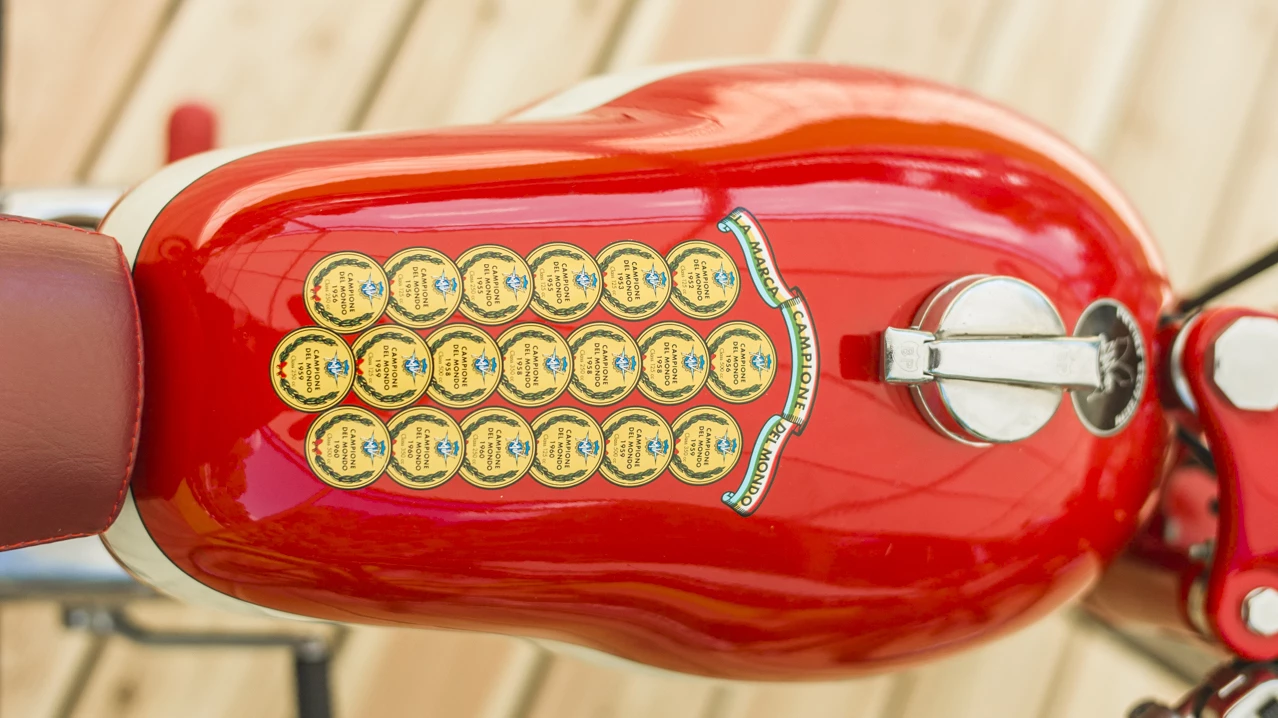The organizing committee and judges at Concorso di Motociclette Villa d'Este are a breed apart, often conjuring new classes for the elite motorcycle beauty pageant from areas where most concours organizers fear to tread.
This year the eccentric category choices all offered an opportunity to celebrate different aspects of transportation heritage, as the concours included a raft of 50cc motorcycles and a category for obscure 1950s scooters. Such categories might be seen as curious by the motorcycle fraternity of many countries, but of course this is Italy, and it is the spiritual home of both categories.
Other categories this year included adventure motorcycles of the 1920s and 1930s, 1960s street scramblers from Japan, a category for concept bikes and another for 1970s Japanese fours with European frames.
Trofeo BMW Group – Best of Show by the Jury

Yet another indication of the "outside the square" thinking which makes the Concours d'Elegenza and Concours di Motociclette at Villa d'Este so special was this somewhat unconventional "Best of Show" motorcycle. It's a 6 hp Puch 250cc two-stroke single built in 1933.
Presented by Italian motorcycle collector Max Reisch, the bike was used by his father, Peter Reisch, to ride from Vienna to Mumbai in 1933. Reisch and pillion passenger Herbert Tichy covered 13,000 kilometers, crossing the Balkans, Turkey, Syria, Iraq, Persia and Baluchistan on the way to India, with the trip documented in a book entitled India: The Shimmering Dream. The bike has been maintained as it finished the journey and tells many a tale just looking at it.
Trofeo Villa Erba – Best of Show by Public vote
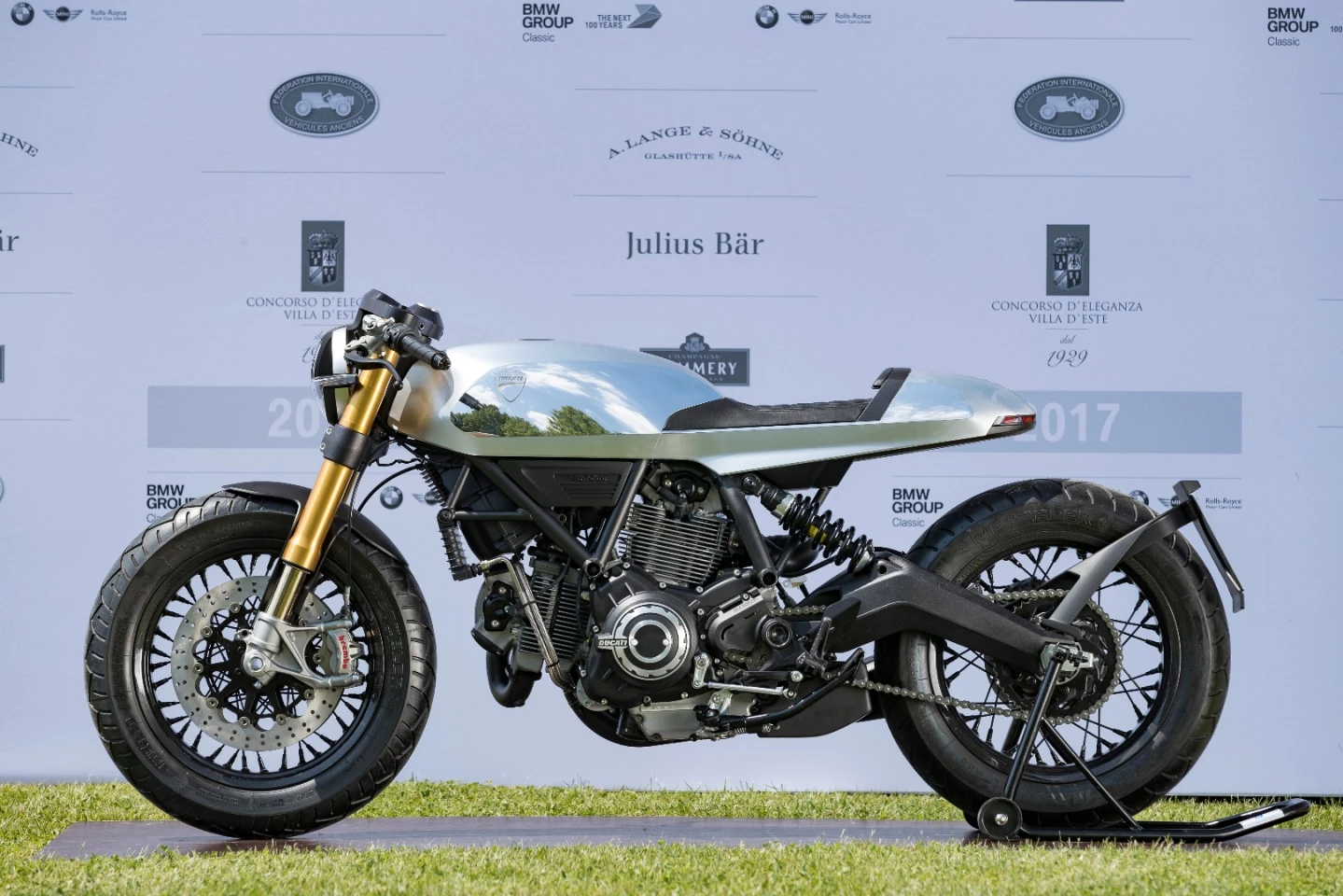
The winner of the public vote for the best in show motorcycle at Villa d'Este was this Ducati Café Racer created by Ducati's own Centro Stile design studio. There's not a lot of information about the bike, though it is clearly a derivative of the 800cc Scrambler wearing an aluminum monocoque seat-tank unit with some exquisite finishing work that contrasts between highly polished and a satin finish. It speaks volumes for the prestige of the Villa d'Este Concorso di Motociclette that Ducati should enter two concept bikes that have never been previously seen.
Class A: Dreams & Adventures – Motorcycles of the 1920s and 1930s for the great adventure
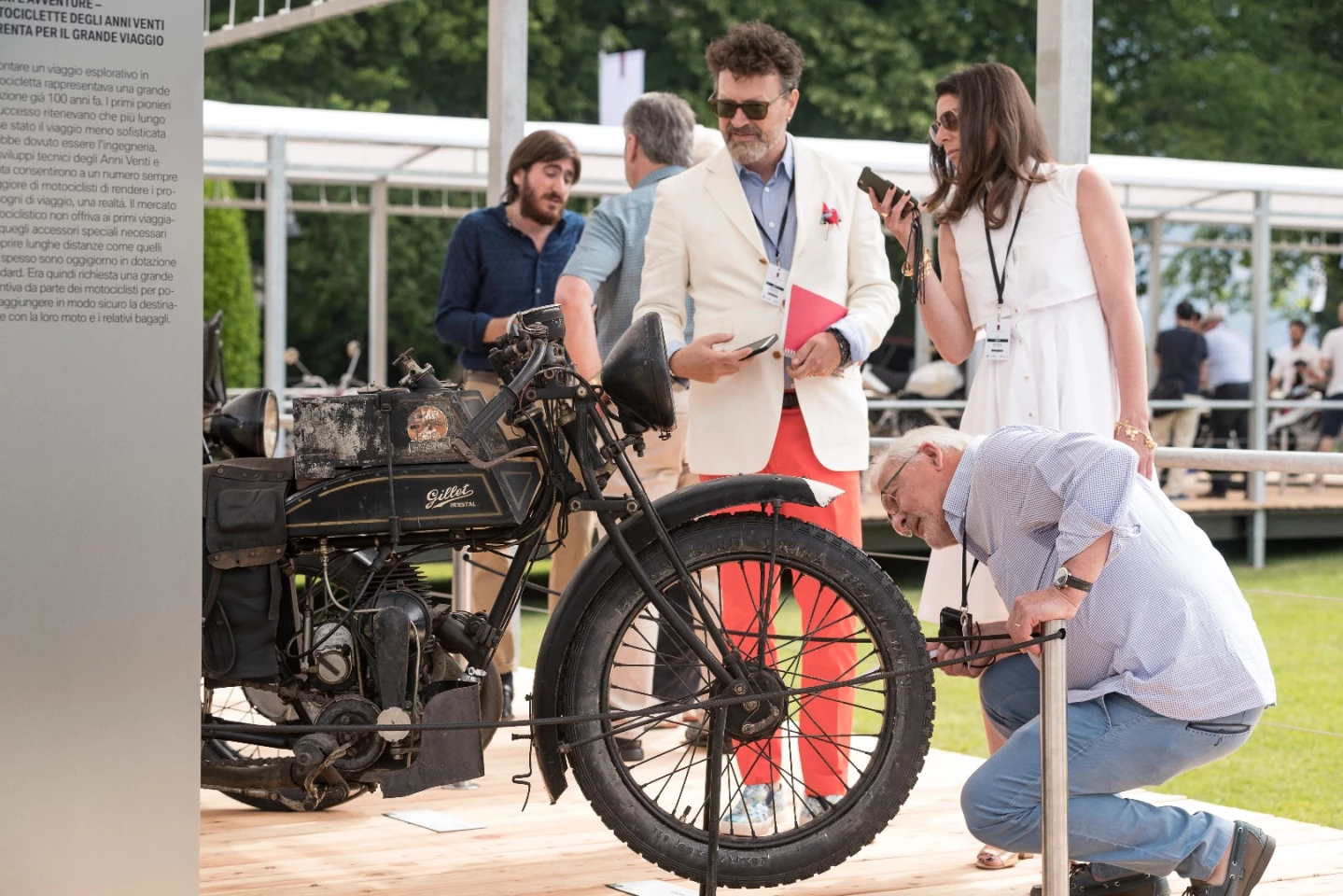
This 1926 Gillet Tour du Monde 350cc single was most likely the first round-the-world motorcycle, having been used by celebrated French journalist and traveler Robert Sexé in his motorcycle travels of 1926 as he traversed 35,000 km across Europe then Russia to Japan, then onward to cross America, all in six months.
If you've never heard of Sexé, he's the fellow who is believed to have inspired Herge's TinTin character. Fans of both Sexé and TinTin take great delight in finding similarities between Sexé's photographs and frames in Herge's famous comic strip.

The bike was exhibited at Villa d'Este by the Musée Auto Moto Vélo Châtellerault where the story of the bike can be found in much greater detail.
Class B: The alternatives – 1950s scooters that did not come from the market leader

The five scooters entered in this category were all beautiful and very functional and, unjustly, none of them enjoyed much commercial success. The 1952 Bastert Einspurauto, which won the class was exhibited by the Museo Scooter & Lambretta.
Class C: The originals – 1960s street scramblers from Japan
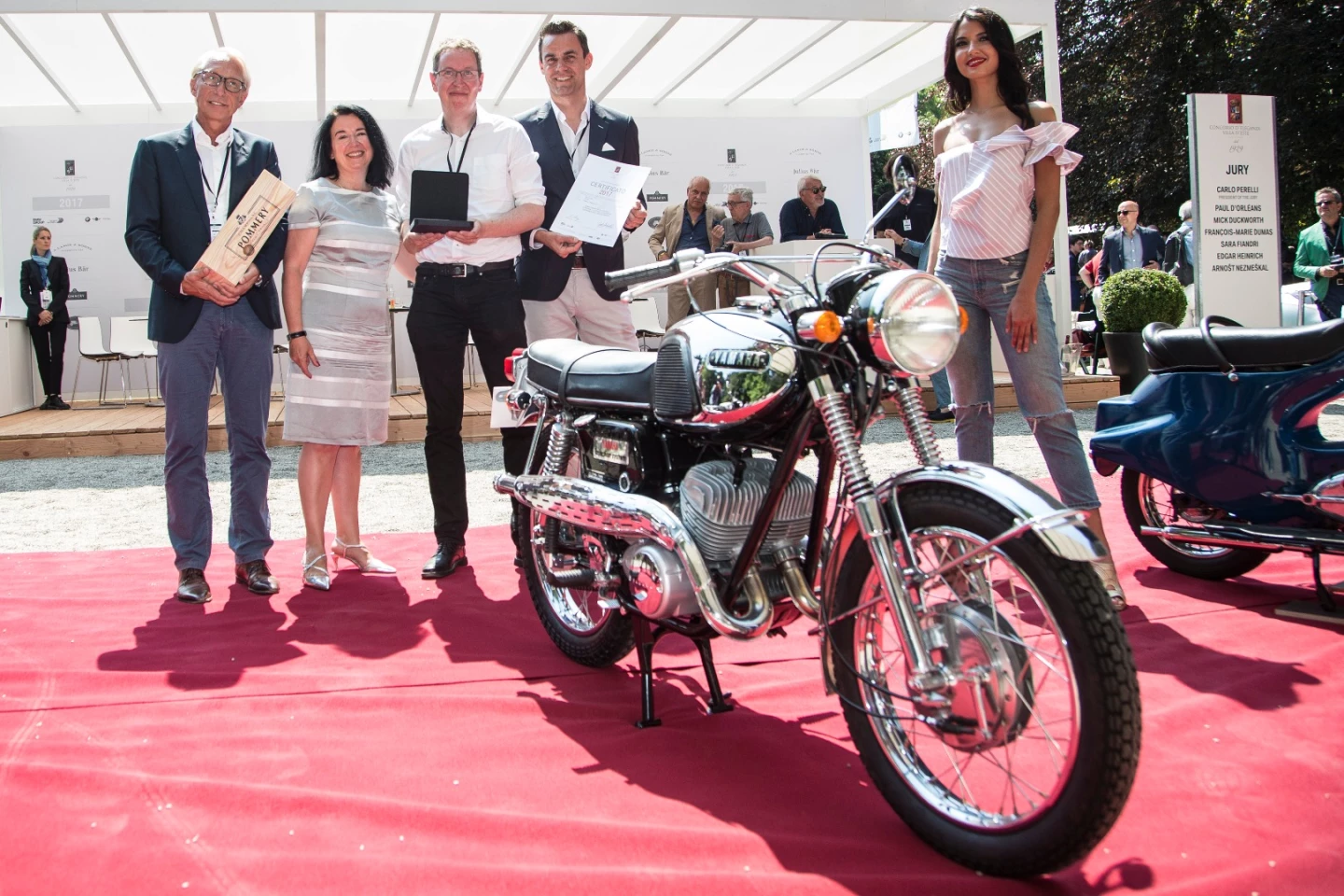
In the period between Japanese motorcycle manufacturers establishing a beachhead in the major export market of America, and actually producing machines suitable for off-road riding, they all produced street scramblers and hence this category.
The competitors in this category were little more than street bikes with upswept exhausts and trials universal tires, but they established the kernel of a new marketplace which would soon explode into the off-road motorcycle industry.
The 1967 Yamaha YM2C pictured above, which won this category, ran Yamaha's ever-reliable twin-cylinder two-stroke bored out to 305cc. Later in 1967, Yamaha released the DT1 250cc single-cylinder soft enduro machine and off-road motorcycling was never the same again. That's the proud owner of the YM2C, German Peter Abelmann, accepting his award.
Class D: Framed in Europe – 1970s Japanese fours in new clothes
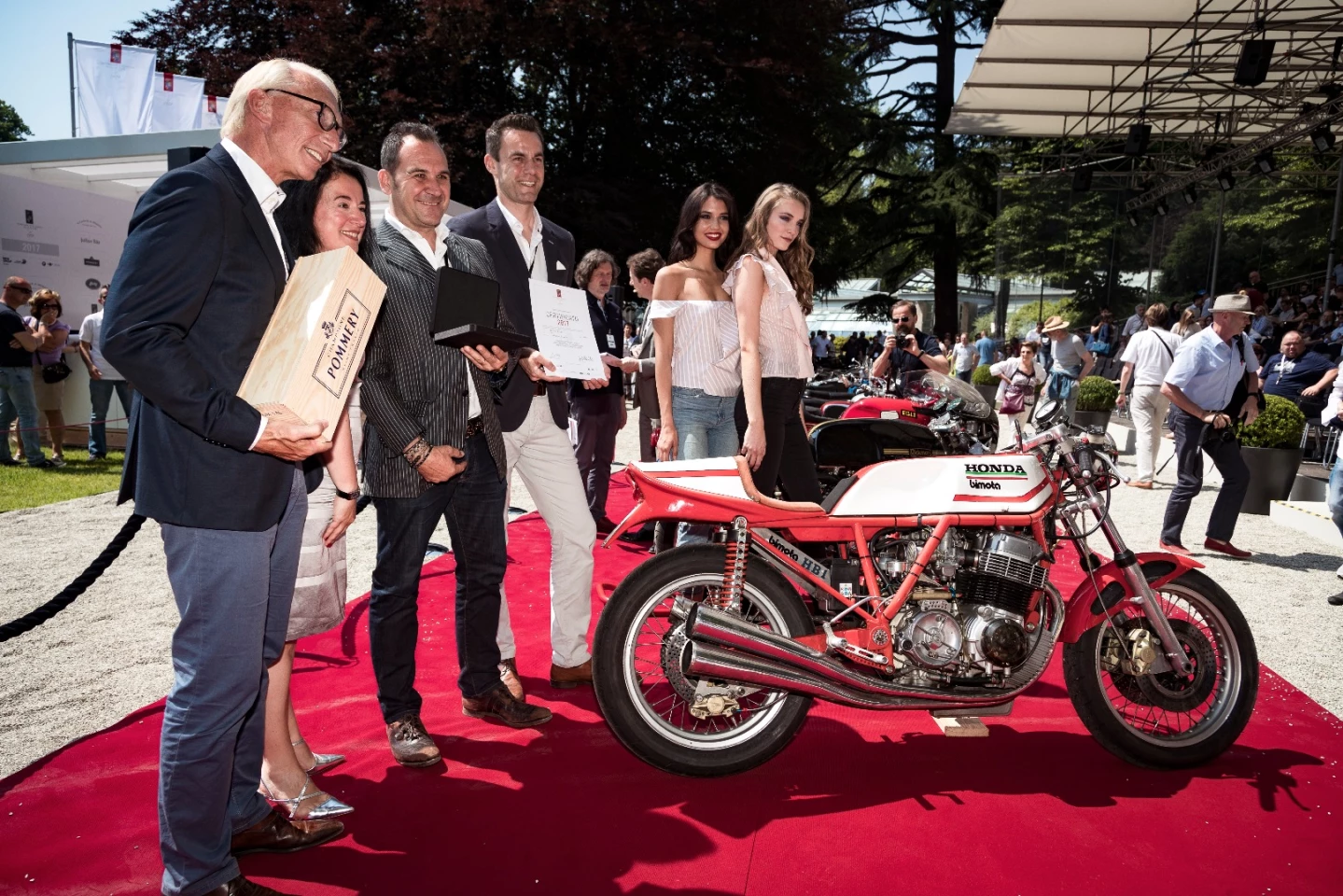
No doubt the category of Concorso di Motociclette at Villa d'Este that will be of most interest to readers is this one. While Japanese four-cylinder engines offered more power and reliability than European engines in the 1960s, Japanese frame technology lagged far behind and specialist frame manufacturers sprang up across Europe catering to those who wished to harness the power of Japanese engines.

The best of those frame manufacturers became household names in two-wheeled families: Moto Martin, Segale, Bakker, Dresda, Magni, Maxton, Harris, Fritz Egli, Harris, Spondon, Bizzarini, Rickman, Seeley and Bimota.
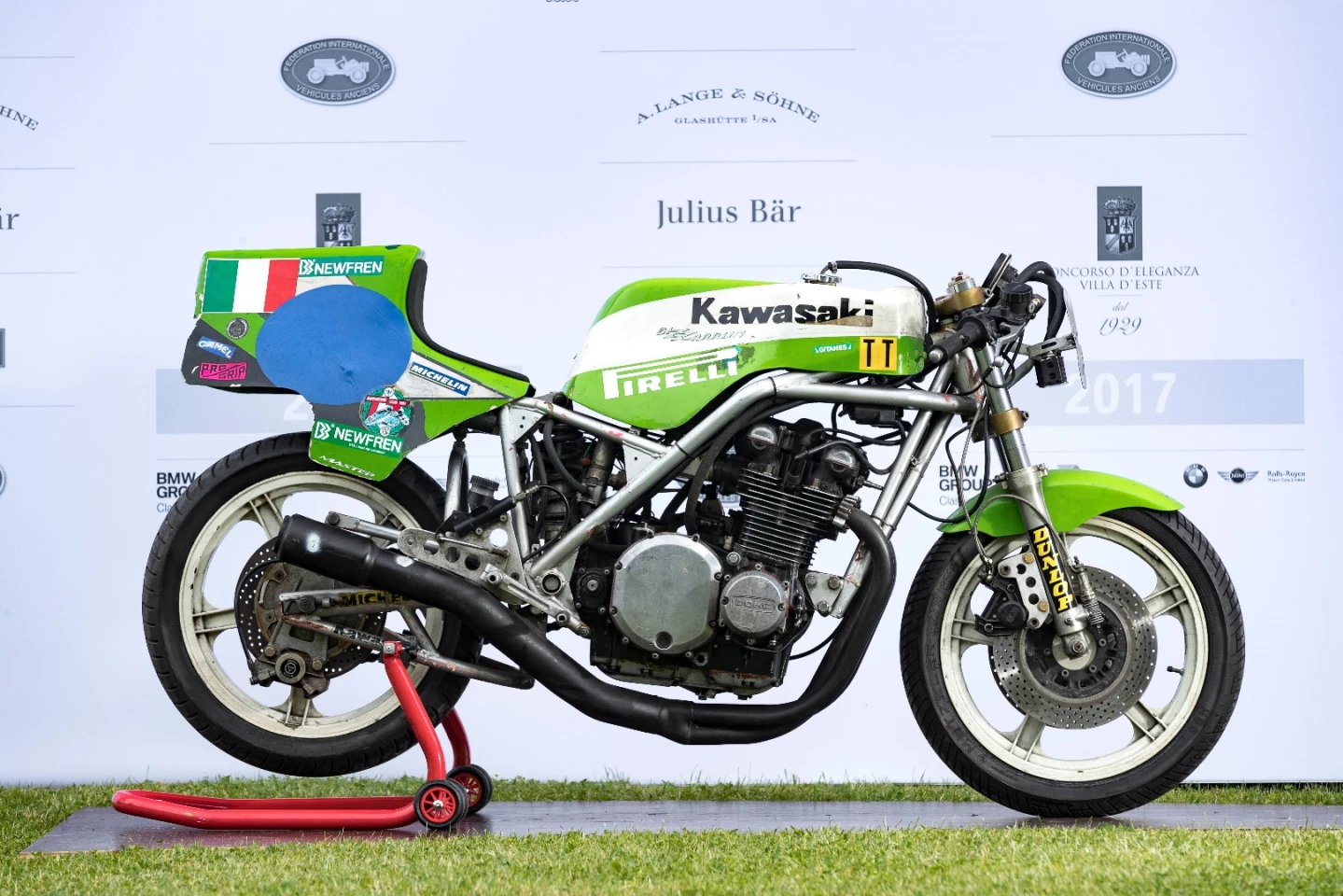
Bimota was founded in 1973 in Rimini by Valerio Bianchi, Giuseppe Morri, and Massimo Tamburini, deriving its name from the first two letters of each of the three founders' surnames.
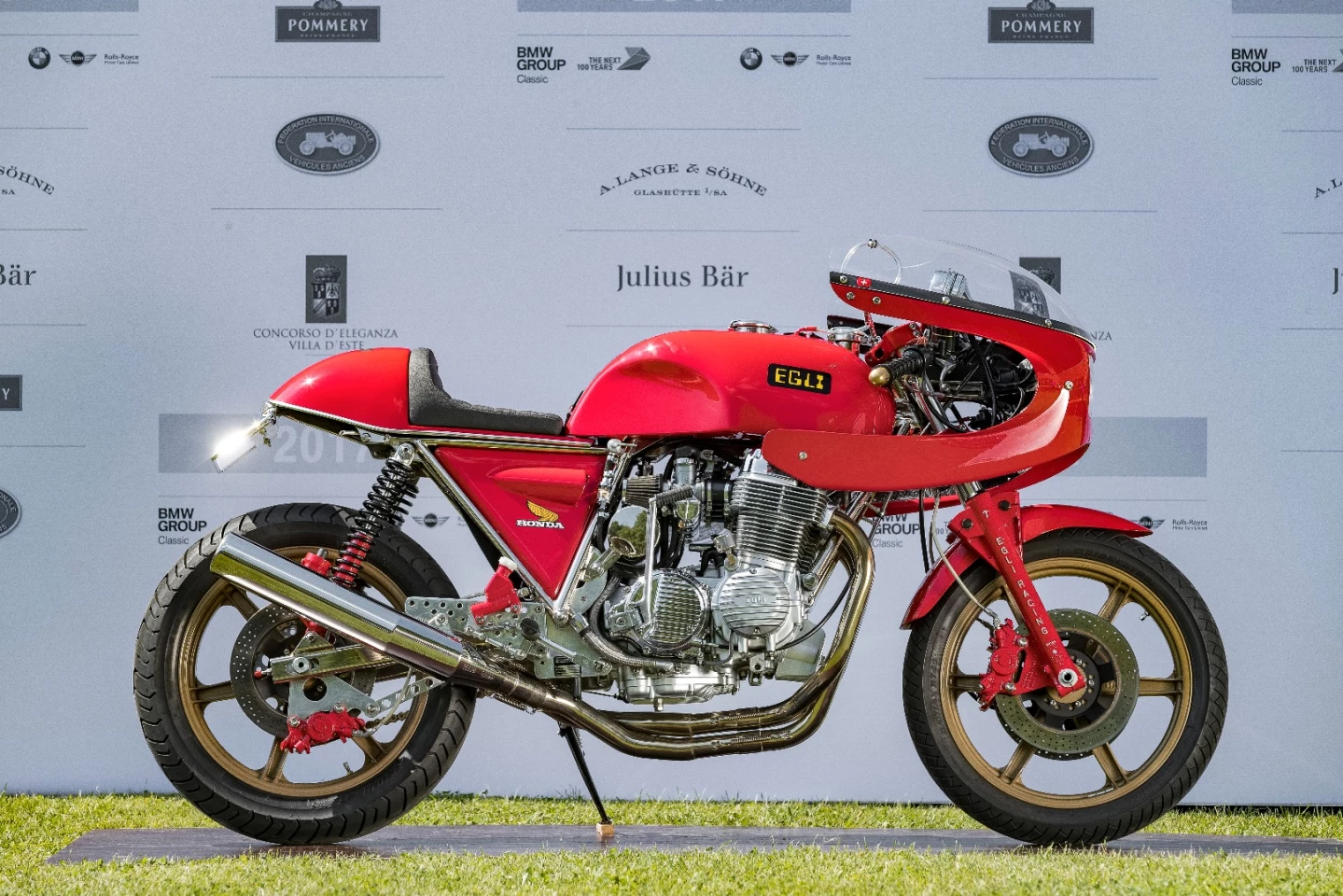
When it made its first complete motorcycle, the HB1, the company began a history of success which propelled it to the top of this esteemed list. Not surprisingly, the 1975 Bimota Honda HB1 from Collezione Zappieri won this category at Villa d'Este.
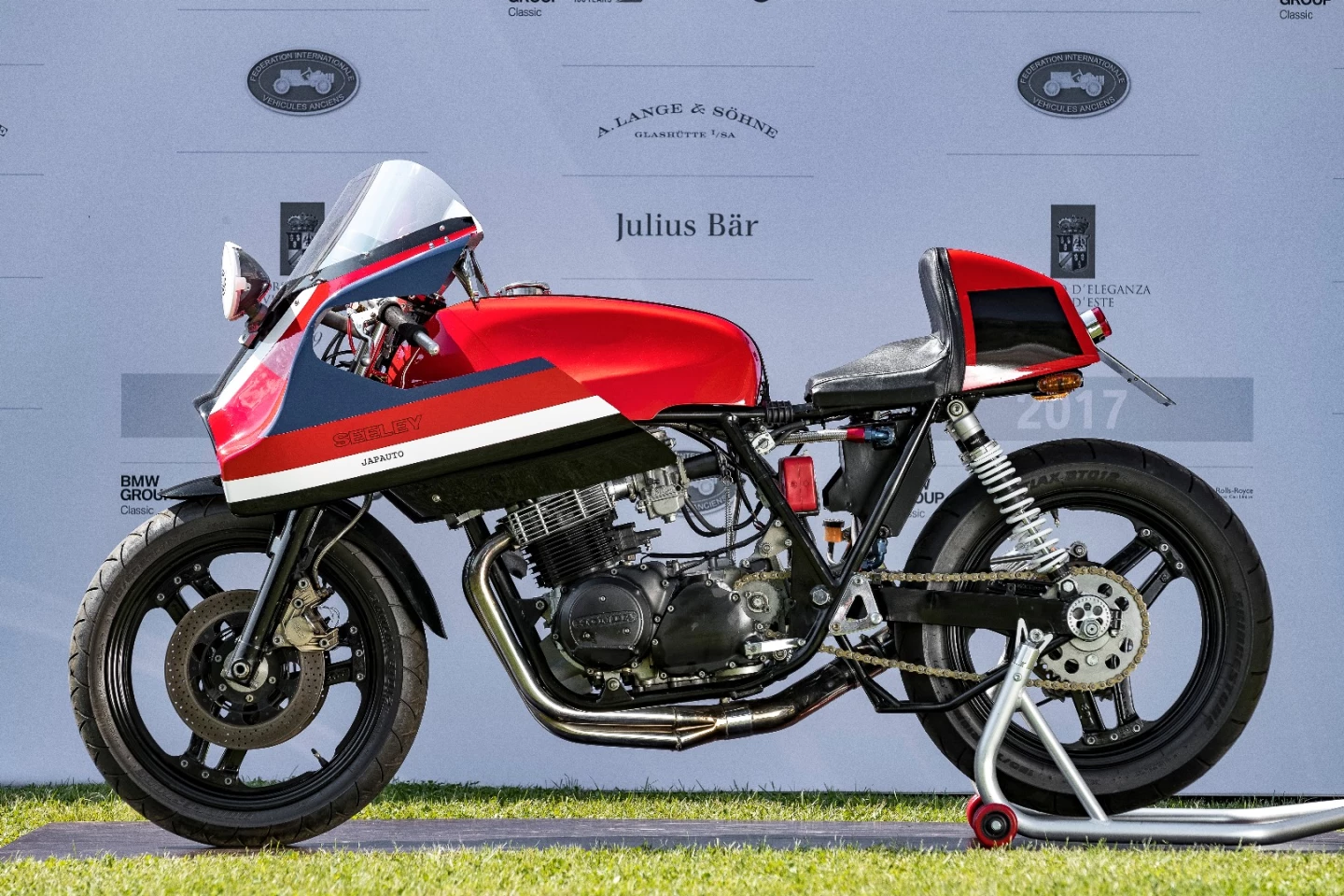
The collection of prestige frame builders represented at Villa d'Este included all those pictured – Seeley, Rickman, Bizzarini, Egli and Bimota. There are many more images in the gallery of these machines.
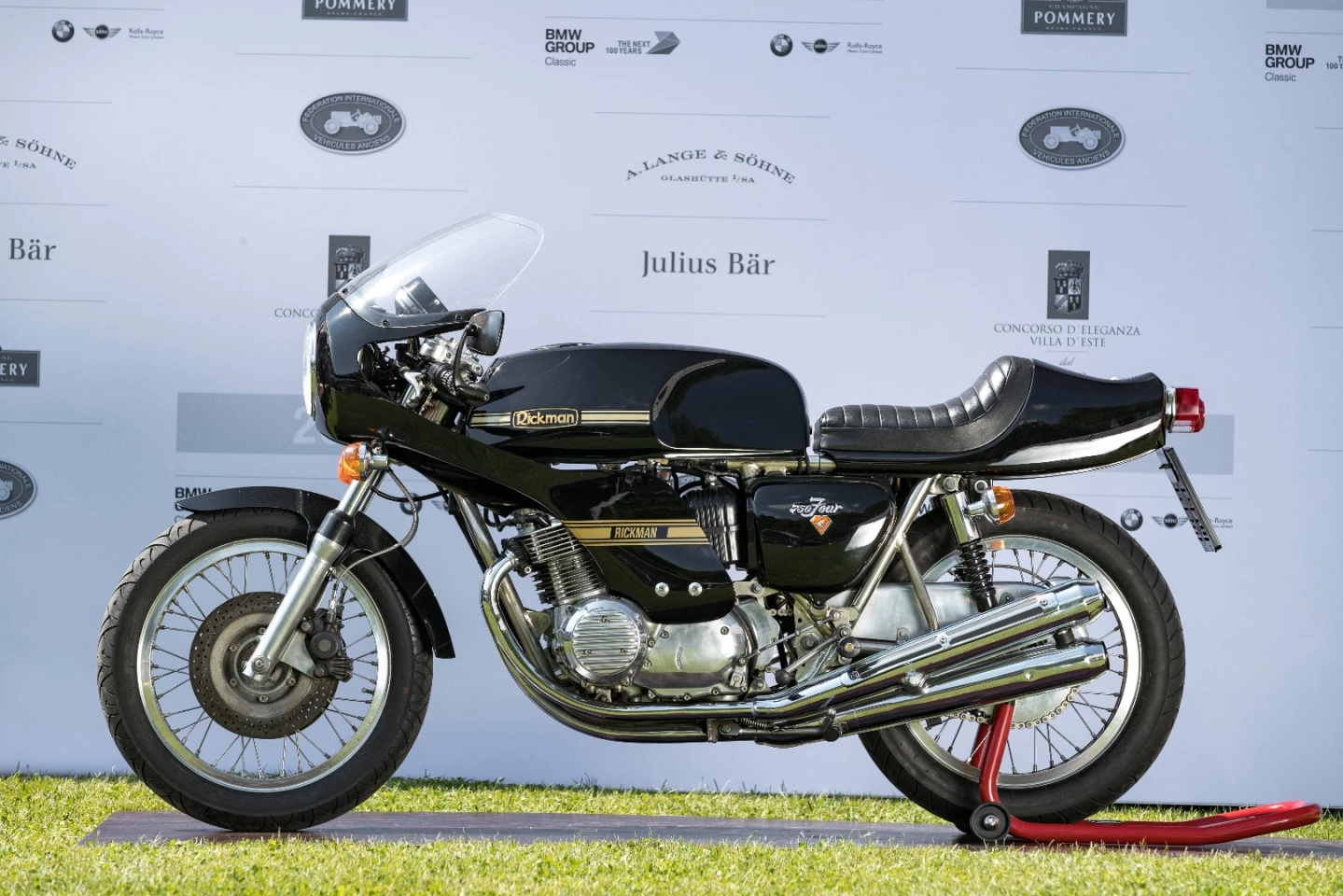
Class E: Motorcycle Design – new concept bikes and prototypes

As previously mentioned, the Ducati Café Racer penned by Centro Stile Ducati won the public vote for "best of show" and it also won this category.
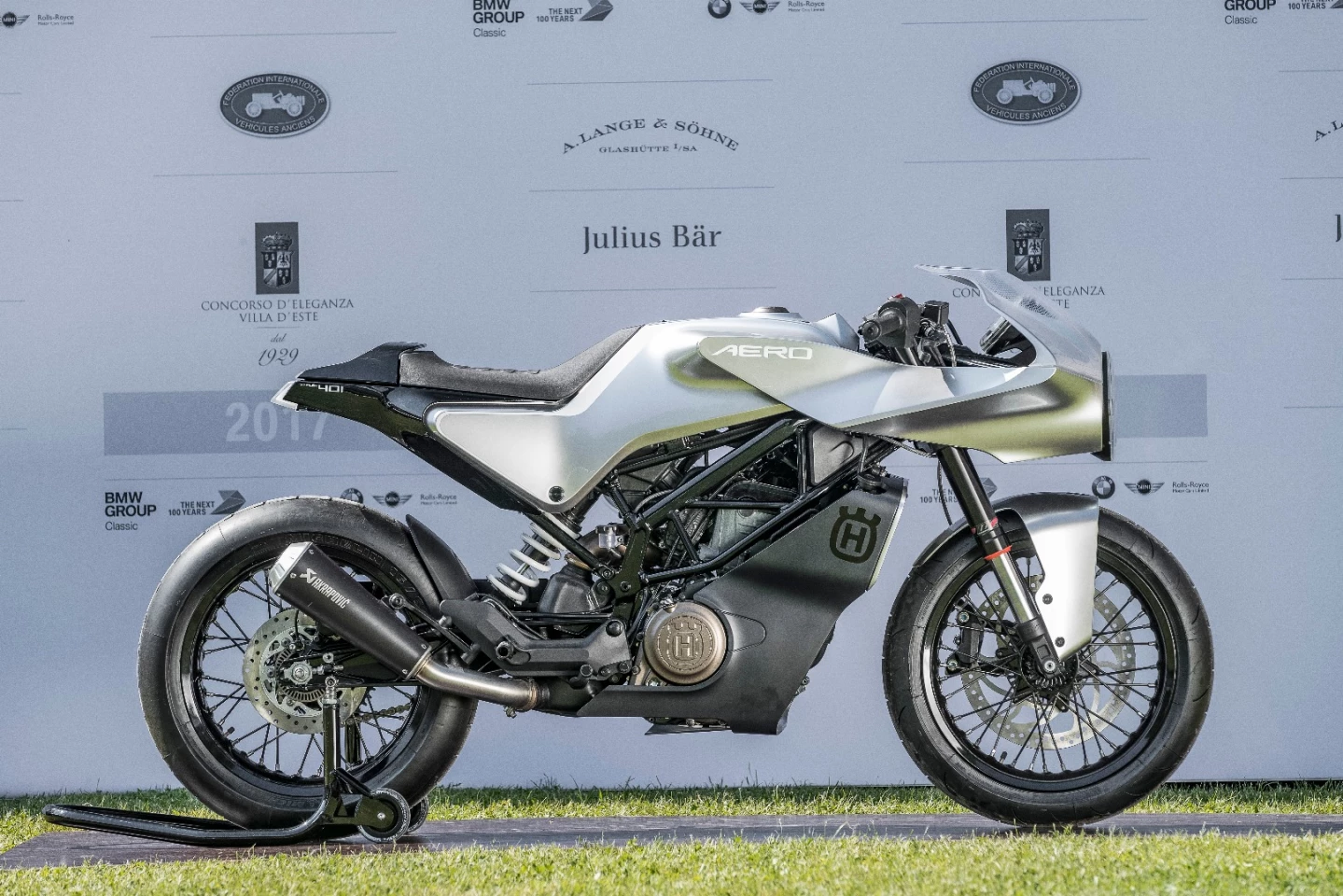
The Husqvarna Aero Concept was unlucky indeed to find itself in the same category as two Ducati concepts that had never been seen before, as it would most certainly have finished first had it not encountered such formidable opposition. The Aero was first seen at the 2016 EICMA Show in Milan, and is based on Husqvarna's Vitpilen 401 Smotorcycle, which is in turn based on the KTM 390. It hence seems very likely that it will go, stop and turn corners equally as well as it looks.
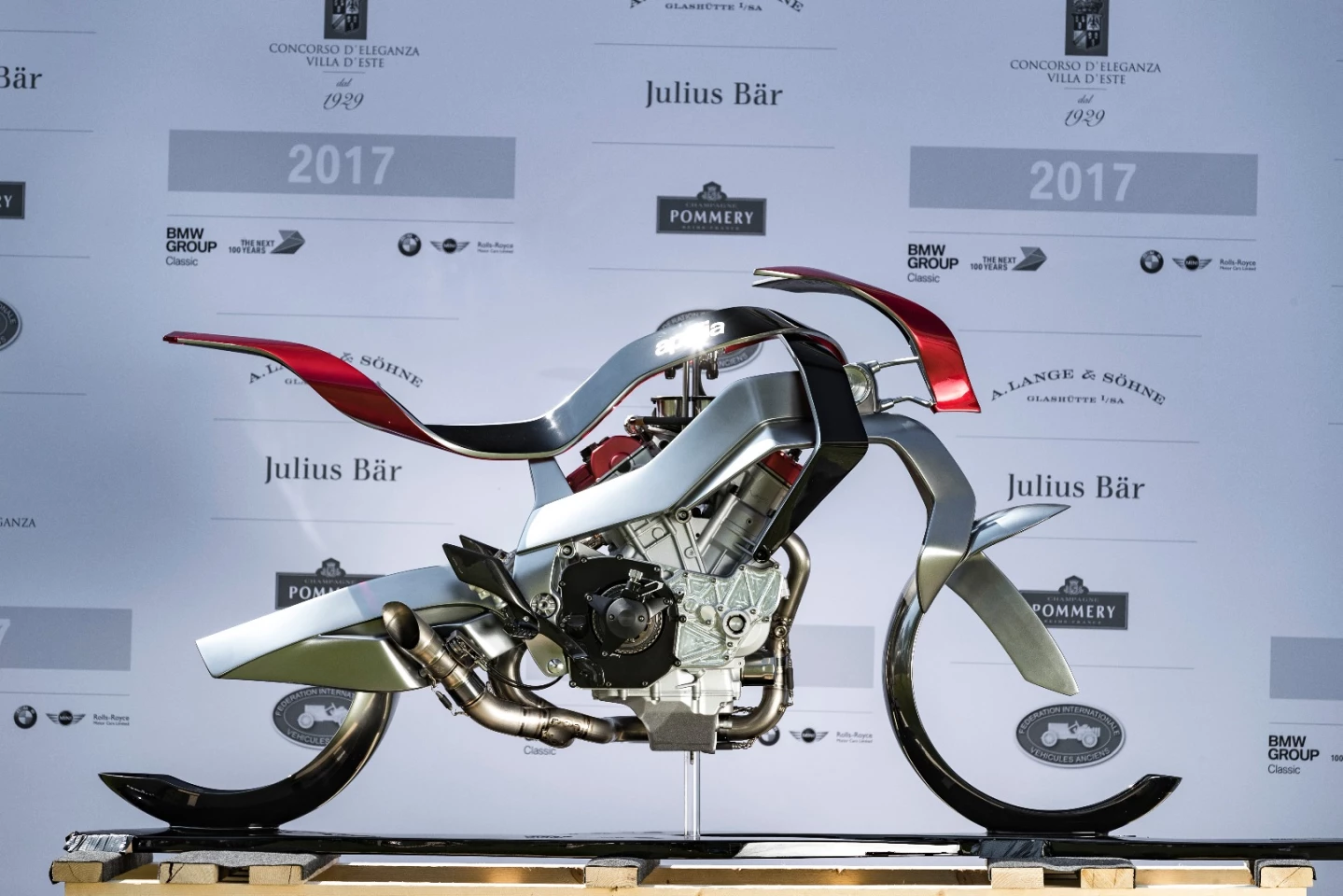
Aprilia's entry in this class is ... err ... hmmm ... difficult to comprehend. Nice motor!
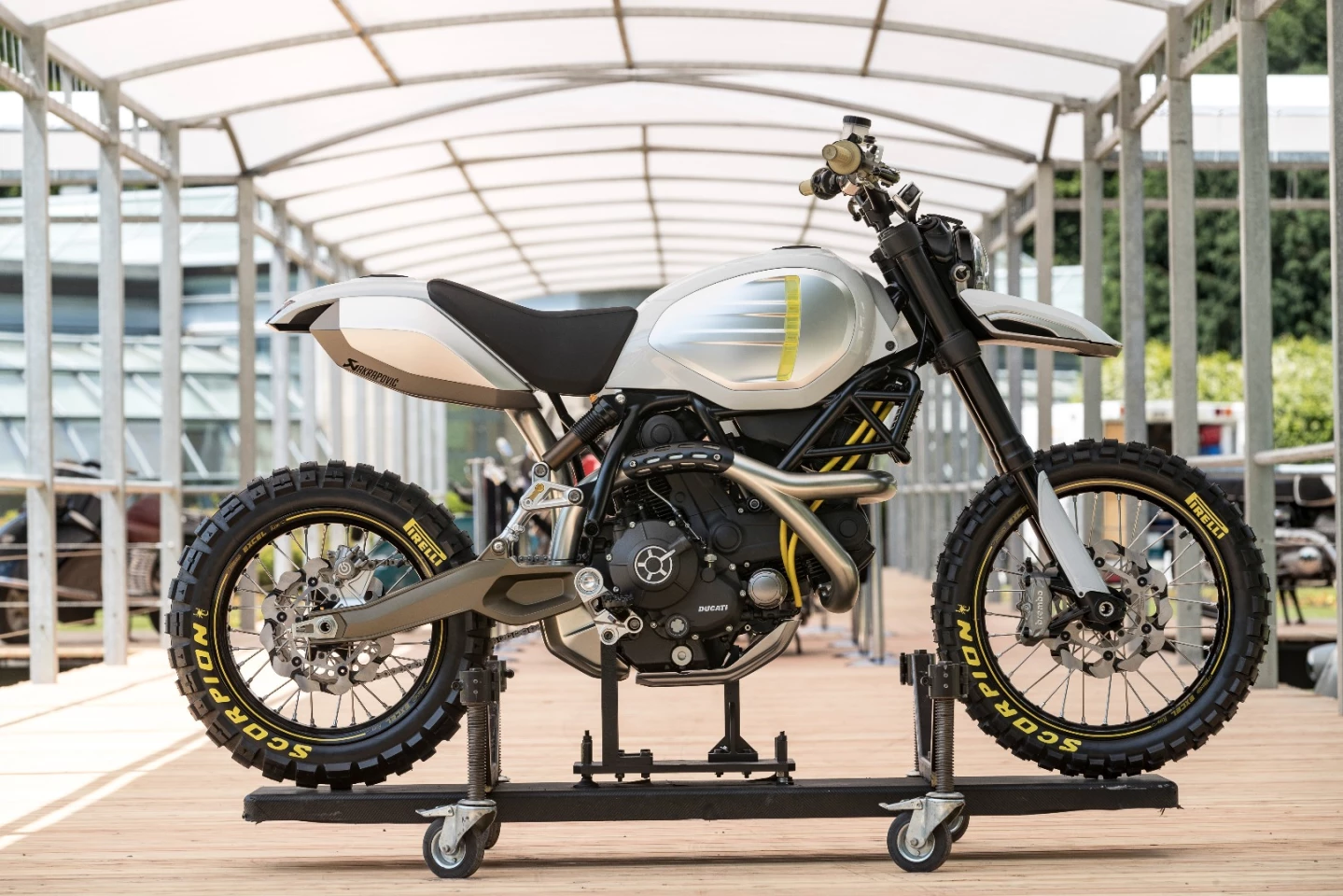
Finally, this is the other Ducati concept shown at Villa d'Este, based on the same Scrambler as the other concept shown from Ducati and while Loz likes it better than the bike which won the public vote, it would need a set of sticky slicks to win my vote. No matter what you do with an 800cc engine and frame, there are better things to ride on loose surfaces in my opinion. To hell with the styling, bikes are about the riding experience.
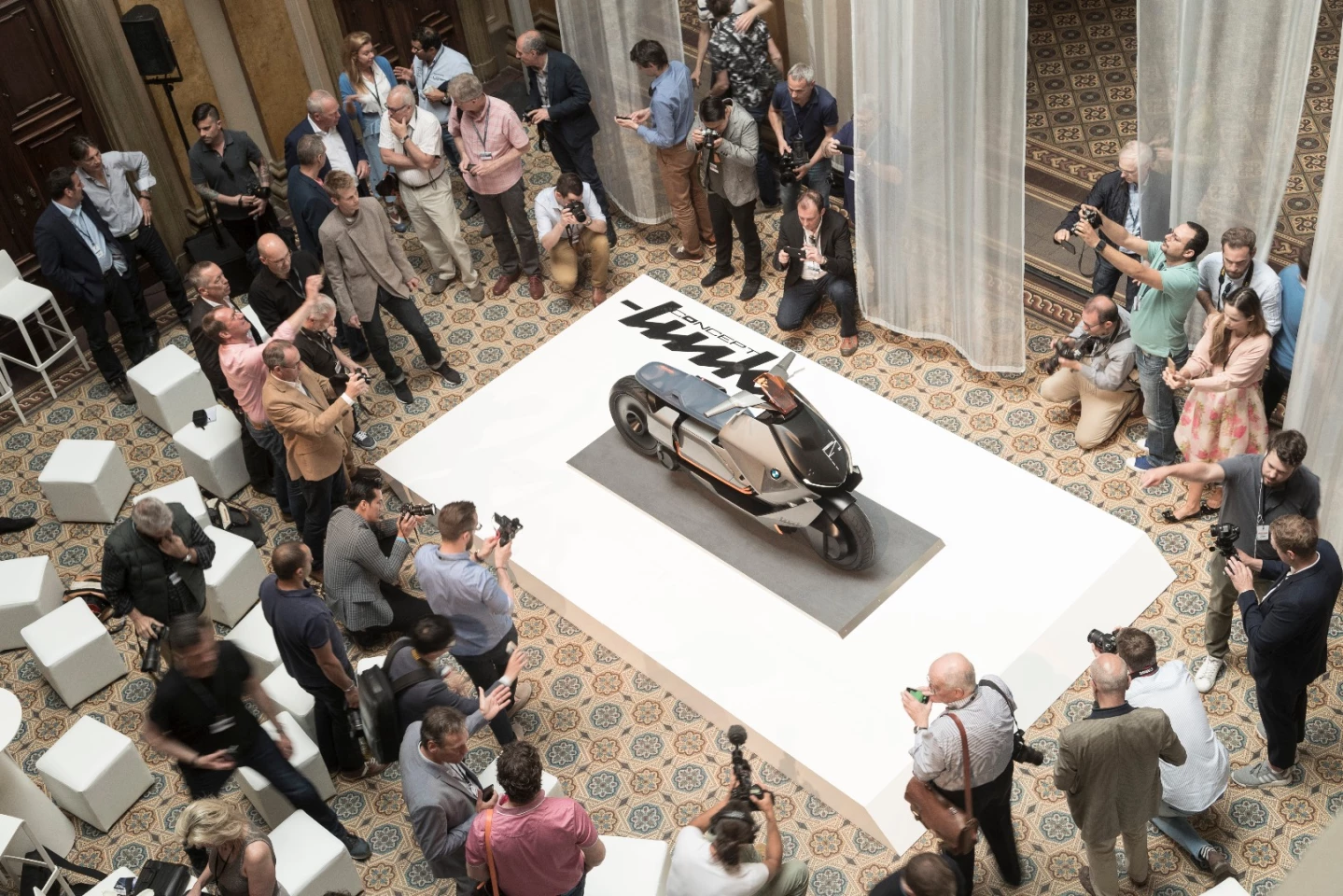
BMW Motorrad's Concept Link was shown for the first time at Villa d'Este, showcasing technologies that are likely to dominate future city streets, like electric powertrains and extended connectivity. It wasn't entered in the concept category, but it certainly found itself the center of attention for the journalists in attendance.
Special Exhibition: 50cc Racers for the road
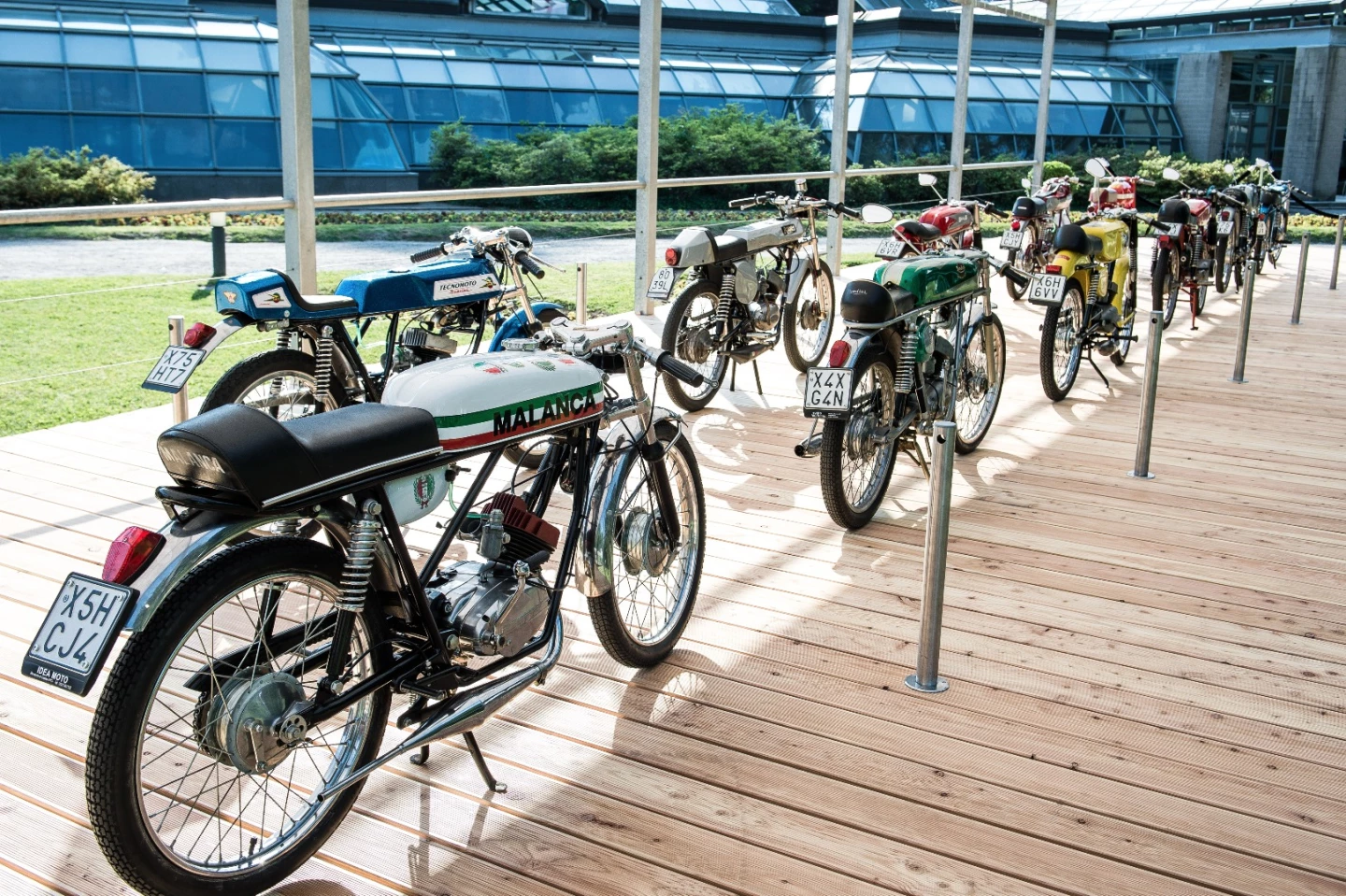
A special exhibition at Villa d'Este this year was dedicated to Italian motorcycles powered by 50ccengines. It is no accident that the world motorcycle racing championships had a 50cc class during the 1960s and 1970s due to the popularity of the class with teenagers across Europe, but in Italy and Spain in particular.
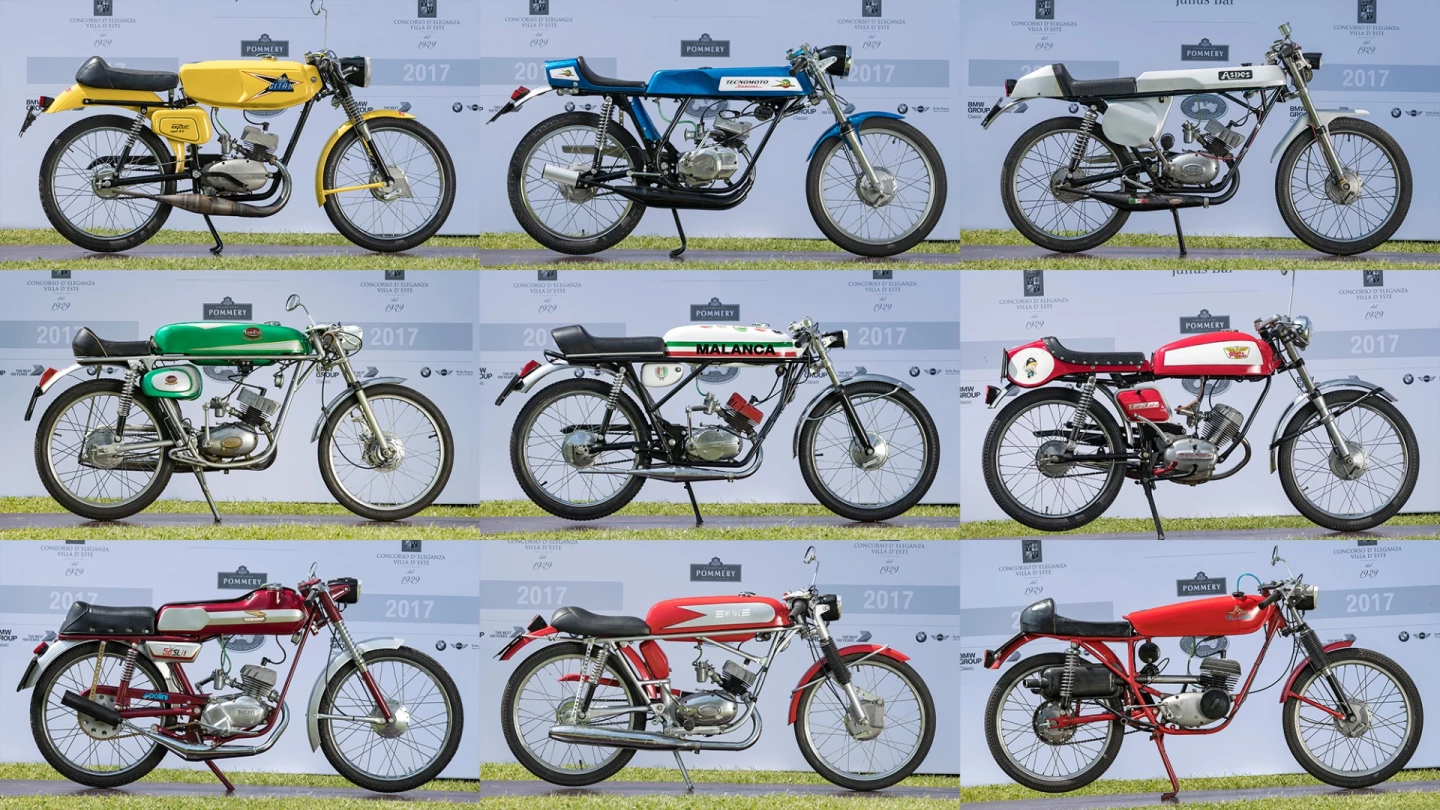
Many a Grand Prix rider learned how to ride pedaling the gearbox on tiny two-stroke bikes such as these and they are no doubt at least partially responsible for creating the culture which spawned several generations of world-class Italian and Spanish riders. Look closely at these bikes and you'll see they invariably have expansion chambers and hence a power band the width of a thumb-nail. MV Agusta might be best known for it's three- and four-cylinder four-strokes, but millions of miniature two-strokes just like these were sold – that's the tank of the MV Agusta 50cc below, advertising all those world championships.
